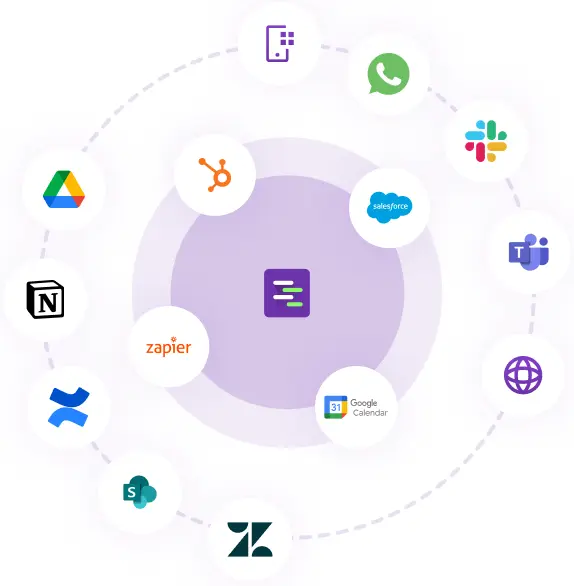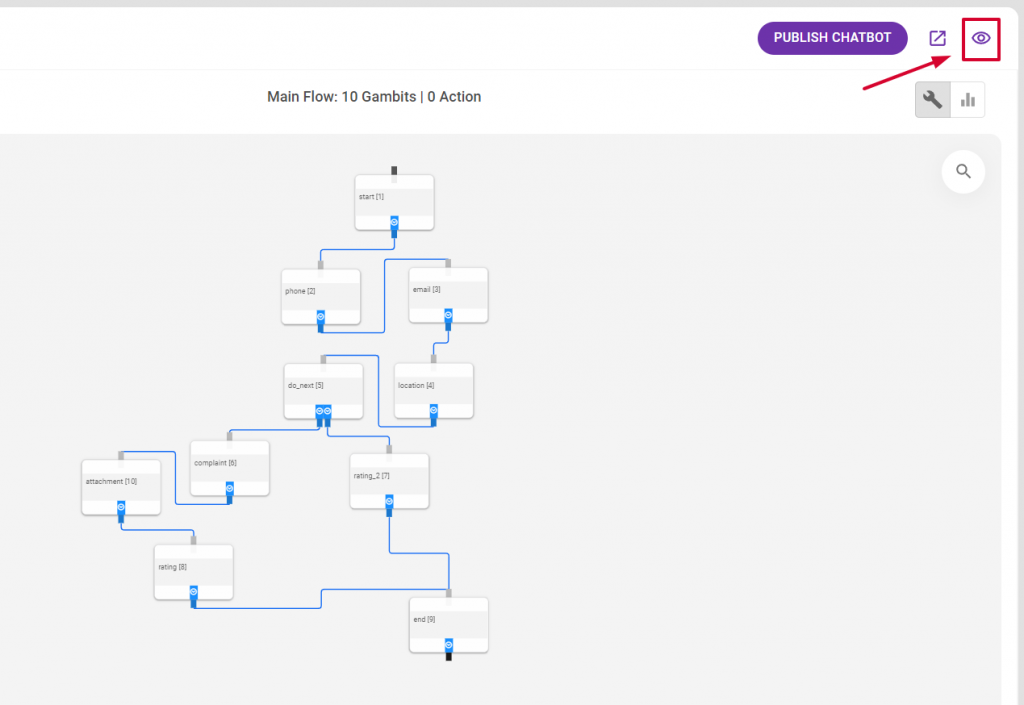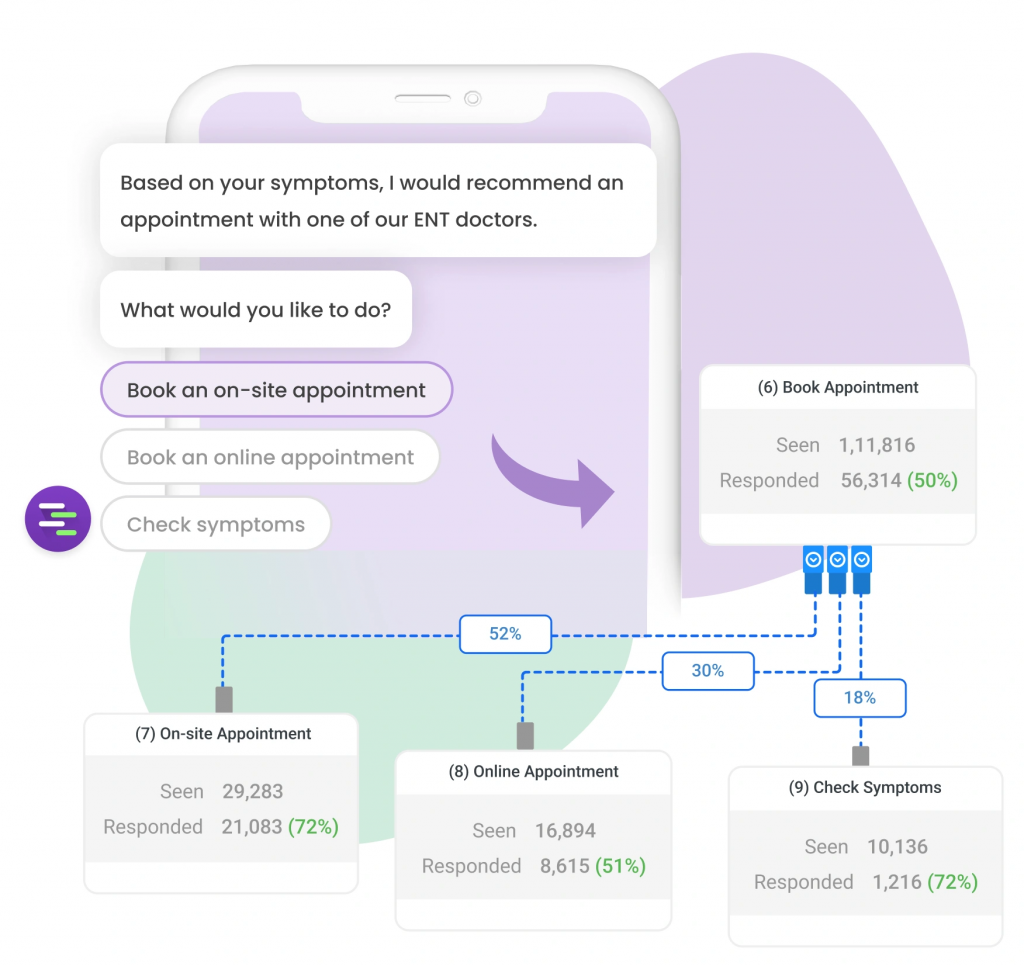How to create and use an AI based chatbot to answer FAQs – Comprehensive guide

According to Gartner, by 2027, chatbots will become the primary customer service channel. We’re rapidly heading towards a world where AI-based chatbots to answer FAQs will become the norm. This shift isn’t just about keeping up with technology—it’s about revolutionizing how we serve our customers efficiently and cost-effectively. Additionally, we’re witnessing the next leap from structured chatbots to AI Agents.
IBM reports that the implementation of chatbot technology can cut operational costs by up to 30%. Chatbots are your front line in customer service, handling FAQs and repetitive queries, leaving your human team to focus on the trickier, more personalized interactions, making sure every customer feels valued.
In this blog, we will:
- Understand the difference between chatbots and AI-based Agents
- Learn how to build our AI-based chatbot to answer FAQs
Chatbots vs AI solutions to answer FAQs – What’s the difference?
Chatbots are interactive software programs designed to automate conversations with current or potential customers, providing both information and assistance.
Chatbots can be of two types: Structured chatbots and AI-based chatbots.
1. What are chatbots?
When people use the term “Chatbot,” they normally mean chatbots that function on structured flows, meaning they follow specific, pre-set rules to interact. They are great for straightforward tasks like filling out forms or providing exact payment details. These chatbots excel at giving reliable answers, but are limited in their capacity to handle complex questions.
2. What are AI-based chatbots?
AI-based chatbots use the strengths of two technologies—structured flows and Generative AI models. By using this hybrid approach, AI-based chatbots can handle a wide range of questions and even tasks.
The workings behind AI-based Agents at Tars consist of three prominent models. Let’s explore them with the scenario of a customer who wants to visit a clinic for a checkup.
- Answering Model: This allows the chatbot to answer FAQs, automate repetitive conversations, and assist in informing customers, e.g., “Can I just walk into the clinic or do I have to book an appointment in advance?” or “Is there a fee to reschedule my appointment?”
- Intent Detection Model: Helps the chatbot understand the intent and context of user queries. For example, if the customer types, “I’ve had a sore throat for almost a week,” the chatbot will understand that the customer might want a diagnosis of the symptom or to book an appointment with a doctor.
- Extraction Model: It converts natural language into structured data, which can be used to facilitate administrative purposes. For example, if the customer says, “I need to know how much a throat swab test will cost at your clinic,” the model identifies and extracts key details like ‘throat swab test’ and ‘cost’ and quickly provides the right information from the clinic’s records.
These models ensure that AI-based chatbots are equipped to exceed expectations and assist customers.
Furthermore, while AI-based chatbots represent an addition of Generative AI, AI Agents take it a step further. These intelligent systems don’t just respond to queries but actively understand context, make decisions, and execute complex workflows. AI Agents combine the conversational capabilities of chatbots with advanced reasoning, tool integration, and autonomous task execution capabilities.
Using Generative AI in chatbots: Benefits, concerns, and limitations
Structured chatbots are generally known for their reliable and predictable nature, although they can be limited and only answer pre-defined questions. In contrast, Generative AI has emerged as a technology that can dynamically answer questions.
But despite its potential, according to a report by BCG of 2,000 global executives, more than 50% still discourage Generative AI adoption. Problems of hallucination, limited traceability, and compromised data privacy are some of the major concerns with this technology.
| Aspect | Advantages | Limitations |
|---|---|---|
| Dynamic Responses | Generative AI can adapt its responses based on the context and nuances of the conversation, making interactions more fluid and human-like. | While AI can adjust its responses dynamically, it may sometimes produce unreliable or contextually inappropriate answers. |
| Ability to Answer Questions | Capable of understanding and responding to a wide range of questions, Generative AI can provide information and solve problems across various domains. | Generative AI might fabricate facts or provide misleading information if the training data is flawed or biased. |
| Impact on User Interaction | Enhances customer engagement by providing prompt and relevant responses, thereby improving the overall customer experience. | Potential to generate harmful content or responses, which could lead to misinformation or adverse effects on the customer and your business. |
Does that mean Generative AI is not fit to automate customer interactions? No!
Platforms like Tars have mitigated the risks of hallucinations and fabricated answers with the approach of RAG + OpenAI. RAG (Retrieval Augmented Generation) is an architectural approach that can improve the efficacy of a large language model. This reduces the possibility of hallucinated or incorrect information in model outputs.
In short, your AI based chatbot can have the best of both worlds—the reliability and predictability of a structured chatbot, plus the flexibility and dynamic responses of Generative AI.
Now, let’s get into a step-by-step approach to build your very own AI based chatbot.
How to create and use an AI-based chatbot to answer FAQs – A detailed approach
Step 1: Planning your AI-based chatbot to answer FAQs
Start by identifying the most common questions your customer support team receives. This could be about your products, services, or general company information. If you have a FAQ section on your website, this is also a good place to start.
Compile these FAQs in a single place, which will serve as the Knowledge Base of your AI-based chatbot.
Step 2: Building and training your AI-based chatbot
There are two ways to build and train your AI-based chatbot: on your knowledge base or training data.
- Build a training database as a CSV
- Using advanced AI solution platforms like Tars to automate the training process
Method 1: Build a training database in the traditional method with CSV Files
AI based chatbots use knowledge bases or datasets to train and answer questions. In the traditional method, we create a training dataset using a CSV.
Here’s how you go about doing this in the traditional method with CSV files:
- Begin by creating a CSV file with all your FAQs.
- Upload this file to your chatbot platform
- Train your chatbot on these data points.
To train the bot, you have to manually separate questions and answers in a spreadsheet. However, don’t think that you have to think of all the different ways a question can be asked. You can simply provide 4-5 variations of a single question and specify the answer for them, and the chatbot will be able to figure out the rest.
Here’s what your CSV should look like.

Next, you have to upload this training data. Don’t forget to publish the chatbot!
Method 2: Using advanced AI chatbot platforms like Tars
Platforms like Tars offer tools that automate the training process.
- Simply upload your FAQ resources
- Train the chatbot
To use this method, you have to update the knowledge base of your AI based chatbot. This can be in the form of website URLs, documents, PDFs, and any kind of written content. You can even use Slack, Google Drive, Notion or Zendesk as your knowledge sources (here’s a quick guide on doing that).
Once you have uploaded the knowledge base, train the AI based chatbot.

Now, your AI-based chatbot can start answering user questions by referring to the data it has received from the knowledge base. Tars Converse chatbots understand natural human language and can simulate a human-like conversation with your customers.

You can find a detailed guide on creating Tars Converse chatbots here (previously known as Tars Prime).
Step 3: Implementing the AI based chatbot to answer FAQs
Integrate the chatbot into your existing customer service platforms, such as your website or customer relationship management system. Platforms like Tars offer easy integrations with Zendesk, Salesforce, Hubspot, or Zapier—and can easily integrate with your existing business processes using API Gambit configuration.

At this stage, ensure your chatbot adheres to relevant data protection regulations like GDPR or HIPAA. This is crucial for maintaining user trust and legal compliance.
Step 4: Testing, optimizing, and deploying your AI based chatbot
There are two areas in which you can test and optimize your AI based chatbot:
- Whether it is functioning correctly
- The quality of responses
Platforms such as Tars offer easy testing and optimization of your AI based chatbot. To test the functionality of your chatbot, you can go into Debug Mode which helps proofread large/complex conversational flows and automates the entire chatbot flow.

Secondly, to test the quality of responses, Tars offers AI Self-Evaluation, which tests responses based on a given dataset of questions and desired answers.

Once you are satisfied with the functionality and the quality of responses of your AI based chatbot, you can deploy it on your website.
Step 5: Continuous improvement of your AI-based chatbot to answer FAQs
After deployment, all that remains is ongoing monitoring and improvement of your AI-based chatbot to continue to wow your customers.
By leveraging Chatbot analysis tools on your platform to get data-driven insights, you can ensure that you’re offering the best possible experience to your customers. For example, Tars User Flow Analytics helps you analyze how users interact with your solution to identify bottlenecks or confusion points and use these insights to improve the conversational flows.

Conclusion: AI Agents are the future
Gartner predicts that by 2027, chatbots will become the main source of communication for customer service channels. Building your AI-based chatbot is one of the key methods to stay ahead of the curve—start by defining your requirements and exploring our No-Code Builder today.
At Tars, we’ve worked in the Conversational AI industry for over 8 years. Having seen impressive outcomes with our structured chatbots, we decided to go one step further and build Tars AI Agent Builder to equip businesses with their own AI Agents.
Explore use cases of AI Agents across industries: Finance, Government, Healthcare, and Insurance.
For a hands-on demonstration or to discuss your specific needs, schedule a quick demo.
I am a content creator and marketer and a Conversational AI specialist. I enjoy crafting informative content that engages and resonates with my audience. In my spare time, I like to explore the interplay between interactive, visual, and textual storytelling, always aiming to bring new perspectives to my readers.
- Chatbots vs AI solutions to answer FAQs – What’s the difference?
- 1. What are chatbots?
- 2. What are AI-based chatbots?
- Using Generative AI in chatbots: Benefits, concerns, and limitations
- How to create and use an AI-based chatbot to answer FAQs – A detailed approach
- Step 1: Planning your AI-based chatbot to answer FAQs
- Step 2: Building and training your AI-based chatbot
- Step 3: Implementing the AI based chatbot to answer FAQs
- Step 4: Testing, optimizing, and deploying your AI based chatbot
- Step 5: Continuous improvement of your AI-based chatbot to answer FAQs
- Conclusion: AI Agents are the future


Build innovative AI Agents that deliver results
Get started for freeRecommended Reading: Check Out Our Favorite Blog Posts!

Madrid Murder Mystery: How Spanish Can Keep You Out of Jail?

Automation of Accounting Processes Using AI Chatbots

Understanding chatbot machine learning – A comprehensive guide

Our journey in a few numbers
With Tars you can build Conversational AI Agents that truly understand your needs and create intelligent conversations.
years in the conversational AI space
global brands have worked with us
customer conversations automated
countries with deployed AI Agents




